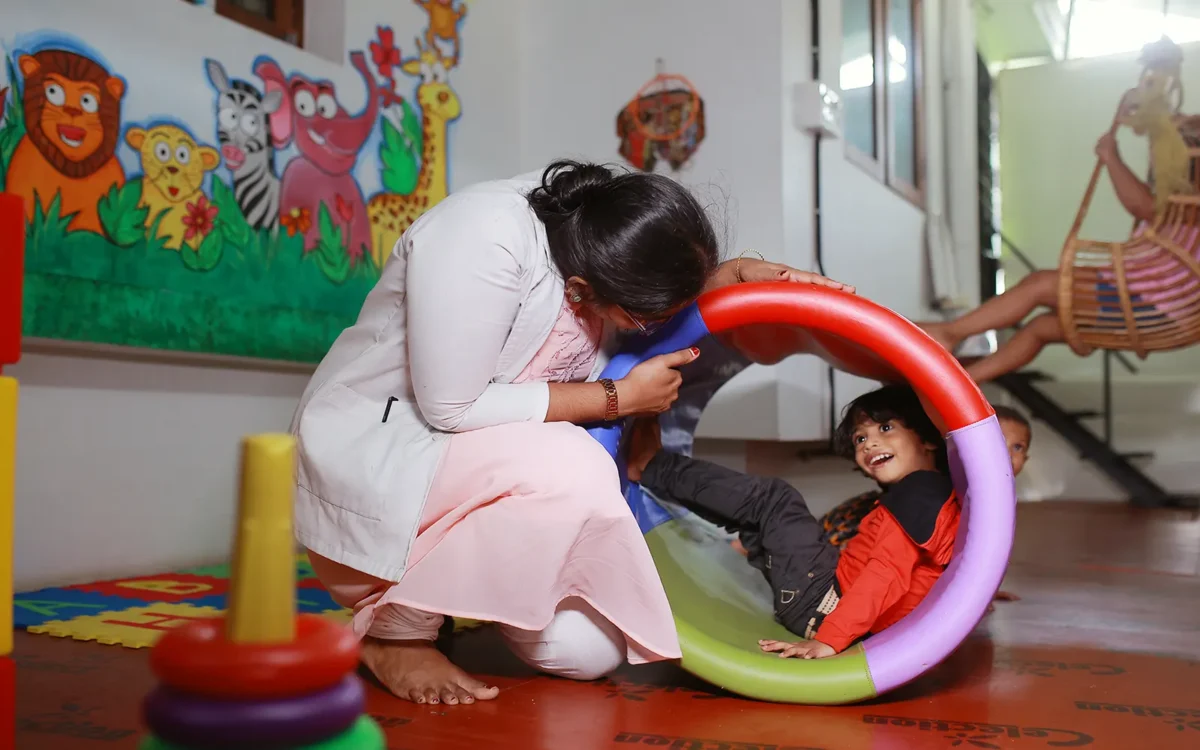Occupational Therapy Activities for Autism
Autism, a developmental disability, is defined by behavioural characteristics. Primary features of autism are described as problems in language skills, play and social interaction. Symptoms begin during early childhood and distinctive incompetence and limited; repetitive behaviours are seen in the socio-communicative field.
In addition to these primary features, individuals with autism generally have sensory processing and sensory integration dysfunction, which affect adaptive behaviour and participating daily activities. Many children with autism are unable to register many of the sensations from their environment. They cannot integrate those sensations to form a clear perception of space. Occupational therapy is one of the main protocols used by doctors for improving the social skill for autistic people.
Occupational therapy (OT) activities for individuals with autism spectrum disorder (ASD) are designed to help them develop and improve their functional abilities and overall quality of life. These activities are tailored to the unique needs of each individual with ASD and are often focused on enhancing their social, emotional, cognitive, and physical skills.
Occupational therapy is a specialized field of healthcare that focuses on helping people of all ages to perform their daily activities and improve their quality of life. Occupational therapists work with individuals who may have physical, mental, or emotional conditions that affect their ability to carry out everyday tasks such as dressing, eating, and working.
Through a variety of interventions, occupational therapists help their clients to develop and enhance the skills they need to participate in activities that are meaningful and important to them. This might include activities related to self-care, work, leisure, or social interaction.
Occupational therapy interventions may involve a range of techniques, such as exercise, adaptive equipment, and environmental modifications. Therapists work collaboratively with their clients to develop personalized treatment plans that address their unique needs and goals.
In occupational therapy, the emphasis is on a holistic approach to treatment that takes into account a person’s physical, emotional, and social well-being. Occupational therapists use a variety of interventions such as exercise, adaptive equipment, and environmental modifications to help individuals improve their functional abilities and achieve greater independence.
Occupational therapy is a versatile profession, with practitioners working in a variety of settings including hospitals, clinics, schools, and community-based organizations. It is a client-centered profession that values collaboration and partnership with clients, families, and caregivers to create personalized treatment plans that address individual needs and goals.
Overall, occupational therapy aims to empower individuals to live life to the fullest by providing them with the tools and support they need to achieve their goals and engage in the activities that are most meaningful to them.
Some common OT activities for autism include:
Sensory integration therapy: This type of therapy is designed to help individuals with autism who may have difficulty processing sensory information. Sensory integration therapy involves exposing the individual to different sensory stimuli, such as sounds, textures, and movements, in a controlled and structured way. The therapist will work with the individual to help them regulate their sensory responses and improve their ability to interact with the environment.
Fine motor skills activities: These activities are designed to improve the individual’s ability to use their hands and fingers for fine motor tasks such as writing, drawing, and manipulating small objects. The therapist may use exercises such as finger painting, cutting with scissors, and using tweezers to help the individual develop their fine motor skills.
Gross motor skills activities: These activities are designed to improve the individual’s ability to use their larger muscles for tasks such as walking, running, and jumping. The therapist may use exercises such as yoga, dance, and obstacle courses to help the individual develop their gross motor skills.
Social skills activities: These activities are designed to help individuals with autism develop their social skills, such as communication, sharing, and turn-taking. The therapist may use role-playing, social stories, and games to help the individual practice and improve their social skills.
Self-care skills activities: These activities are designed to help individuals with autism develop their ability to take care of themselves, such as dressing, grooming, and feeding themselves. The therapist may use exercises such as practicing tying shoes or brushing teeth to help the individual develop their self-care skills.
Occupational therapy (OT) is a kind of medical services that assists with tackling the issues that impede an individual’s capacity to do the things that are essential to them like:
- Taking care of oneself – getting dressed, eating, moving around the house,
- Being useful – going to work or school, partaking locally
- Recreation exercises – sports, planting, social exercises.
OT can help them regain independence in all areas of their lives. Occupational therapists help with barriers that affect a child’s emotional, social, and physical needs. To do this, they use everyday activities, exercises, and other therapies.
Occupational Therapy (OT) makes improvement in the following areas:
- Attention span and stamina
- Transition to new activities
- Play skills
- Need for personal space
- Responses to touch or other kinds of stimuli
- Motor skills like posture, balance, or manipulation of small objects
- Aggression or other types of behaviours
- Interactions between the child and caregivers
At Jeevaniyam, We have the best treatment for occupational therapy in Kerala, India. Our Occupational therapists work as part of a team that includes doctors, parents, teachers, and other professionals. They help set specific goals for the children with autism. These goals often involve social interaction, behaviour, and classroom performance.
The therapist watches children to see if they can do tasks they are expected to do at their ages – getting dressed or playing a game, for example. Sometimes, the therapist will have the child recorded during the day to see how the child interacts with people and things around them.


